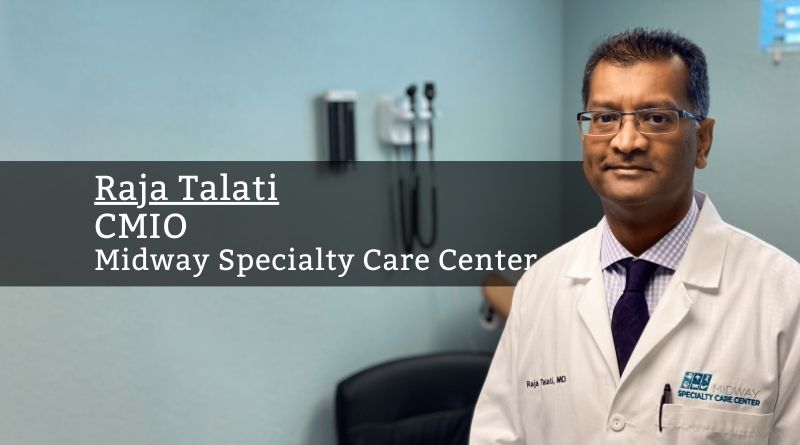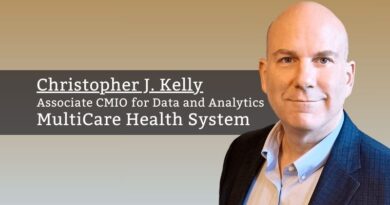The Great Leap in Clinical Decision Support (CDS)
By Raja Talati, CMIO, Midway Specialty Care Center
I remember when clinical decision support (CDS) tools would tell me to do a mammogram on a male patient and a pap smear on an 85-year-old woman. A lot has changed since that time, and we need to embrace and understand how these incredible tools can help us in population health management (PHM) by reducing unnecessary illness and reigning healthcare spending.
CDS has gone a long way since we started using electronic health records (EHRs). At the fundamental level, a well-oiled CDS program should provide real-time guidance to all healthcare providers. The entire healthcare team should use it to ensure patients receive the best quality of care with up-to-date guidance. They need immunizations and screenings to receive medications that are on their pharmacy benefit manager’s (PBM) plan. They adhere to the current standards of care. This should have happened, but unfortunately, in the current state, this is not working in the best interest of the patient.
Using the latest artificial intelligence (AI) tools would allow decisions to be made based on the latest clinical evidence, which is not only cost-effective but results in better outcomes when used appropriately. Currently, there remains a disconnect between the designers and developers. CDS must not interfere with users’ clinical workflows, whether physicians or medical assistants. Alert fatigue has forced users to press the “X” and close the window. We have the opportunity to fill this wide gap with AI. Electronic medical records (EMRs) are now easily integrated with CDS to provide the much-needed guidance to achieve better outcomes.
CDS has traditionally relied on current practice guidelines. Now, using AI and large language models (LLMs), we can provide the most up-to-date guidance for preventive care, follow up and medication adherence. Guidelines change continuously; leaning on AI tools would realize the best outcomes. Because clinical guidelines change rapidly as new studies and treatments are developed, it becomes exceedingly difficult and time-consuming to digest and apply this information. However, clinicians can know about these changes that occur so rapidly; therefore, support trees would be fluid and clinical pathways would change continuously using AI and alert clinicians to new issues or problems that they would otherwise not have known.
The idea of CDS was a great leap forward; now we have the opportunity to fine-tune this software. We still need to consider the ethical and moral risks of using such software.
As genetic testing becomes more mainstream in the country, it is imperative that current clinicians learn how genomic testing can assist them in providing better outcomes. CDS systems should incorporate such information to change treatment plans and tailor their treatment based on what is hidden in their genetic code.
Variance in the standard of care is a particularly important phenomenon due to geographic differences of availability of clinicians, and technology. Patients living in Area A may not have the same access to the technology or trained providers as those in Area B. This is where properly and intelligently deployed AI tools with CDS systems will provide information to clinicians on the best course of action and treatment of their patients.
Alert fatigue sometimes makes it very difficult for clinicians to look at their screens in a manner that would allow them to digest and act on what is best for their patients. What is very important in this context is to provide clinicians with relevant, timely, and useful information. The new clinical support systems need to ensure that this alert fatigue is minimized by learning what their user is doing with their patient and only displaying relevant information to the current encounter. This type of iterative learning will maximize the use of clinical support systems.
Interoperability has always become a problem with EMRs and the other programs they are attached to. With the widespread adoption of FHIR (Fast Healthcare Interoperability Resources), it will become easier to design and implement CDS systems that can be used and shared amongst various EMR systems easily and translate to a common unified output.
As the American population ages, it becomes even more critical that we leverage the benefits of CDS and AI to predictive analytics to provide clinicians with a predictive score based on medical history, medications, family history and baseline condition of the patient. By utilizing this tool, we can dispatch the correct treatment to the right patient when needed. Not only will this save resources, but quality of life and outcomes will also be improved.
In order to facilitate the adoption and widespread use of these new robust CDS systems, we will need to develop comprehensive academic programs that will allow students to focus on learning how the intersection of medicine and IT (information technology) can save lives.
The idea of CDS was a great leap forward; now we have the opportunity to fine-tune this software. We still need to consider the ethical and moral risks of using such software. It becomes incumbent on the provider and the patient to discuss what is good and bad and what course of action the patient should take based on this discussion. This great tool in our toolbox will guide providers to make better decisions, save resources and provide better care.



